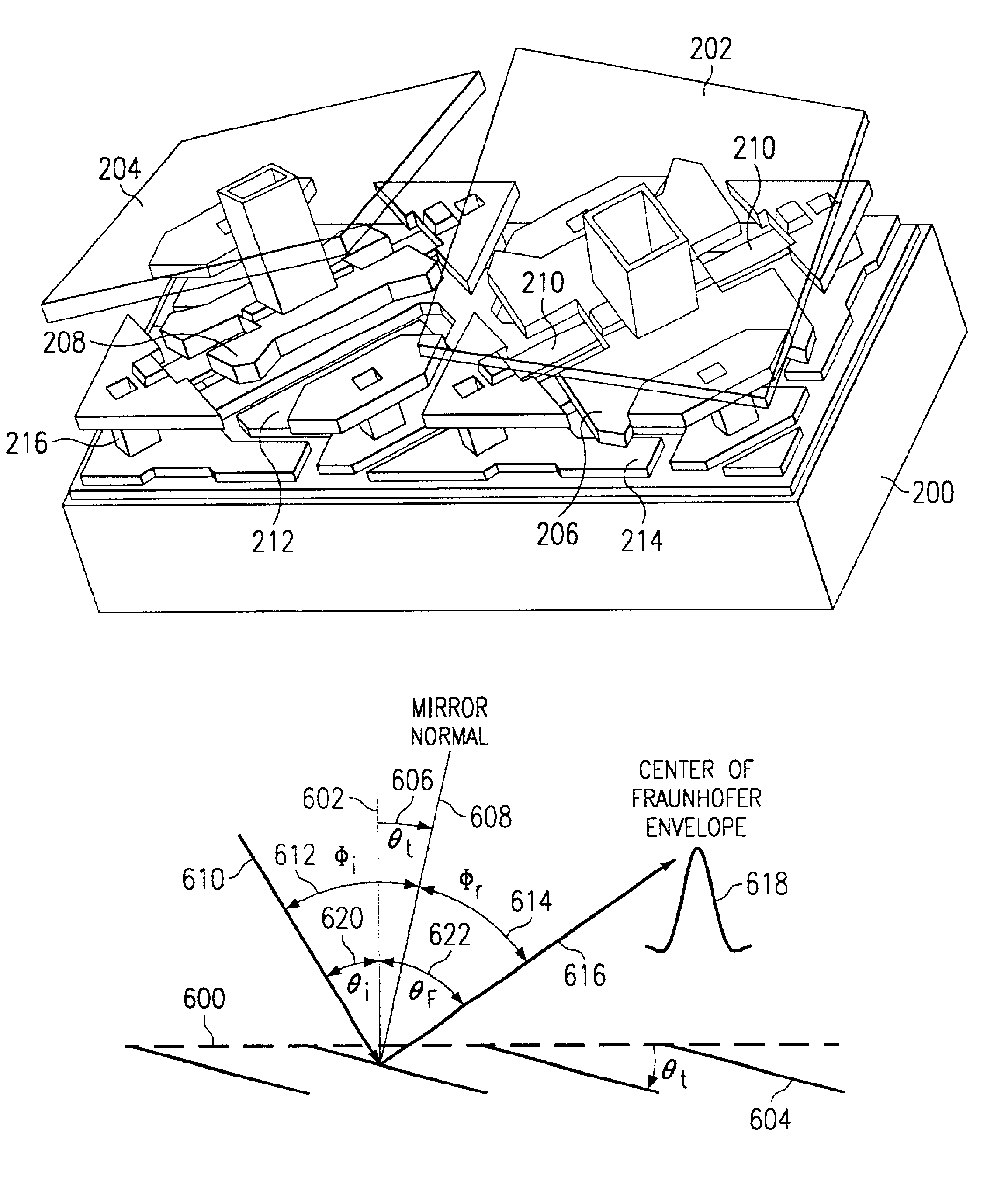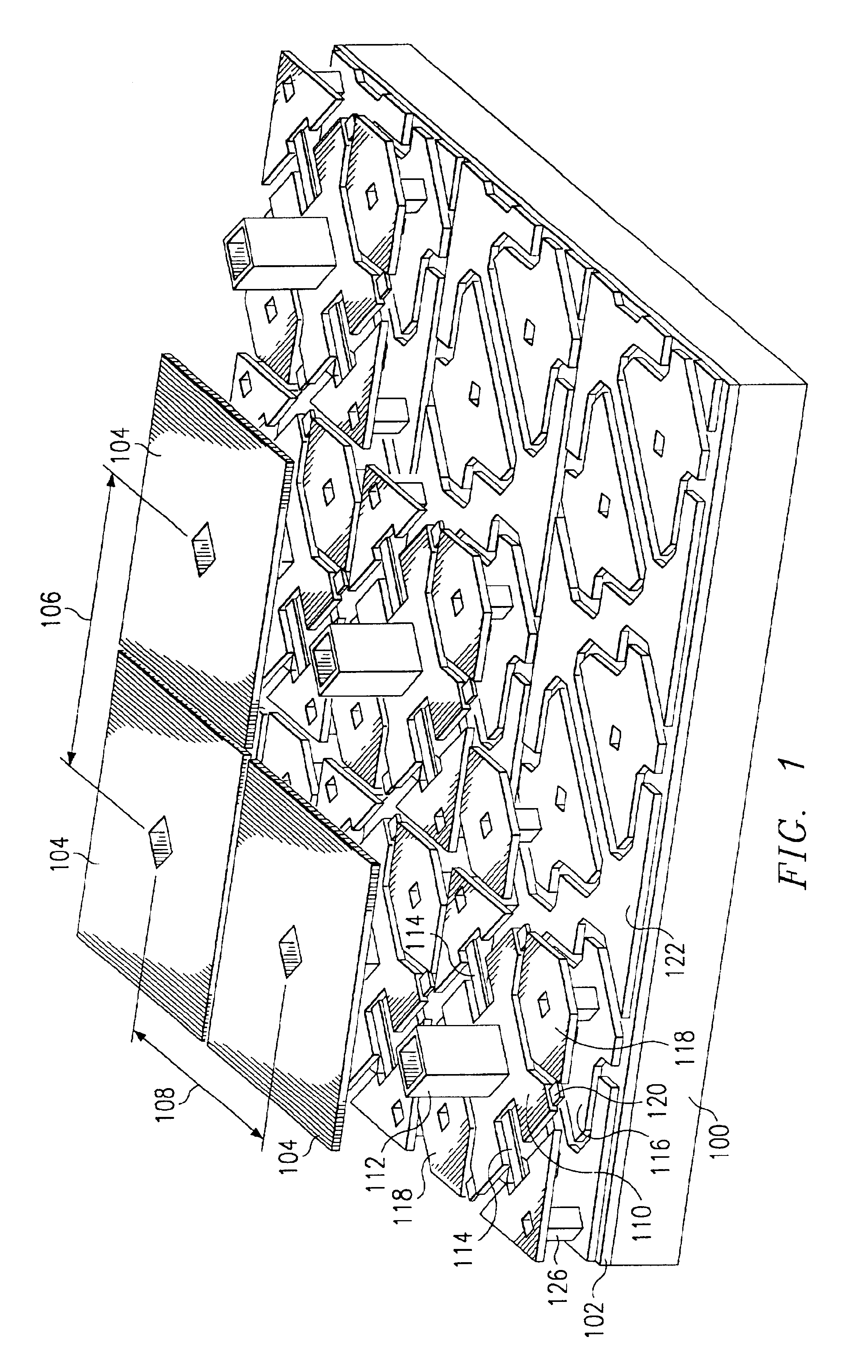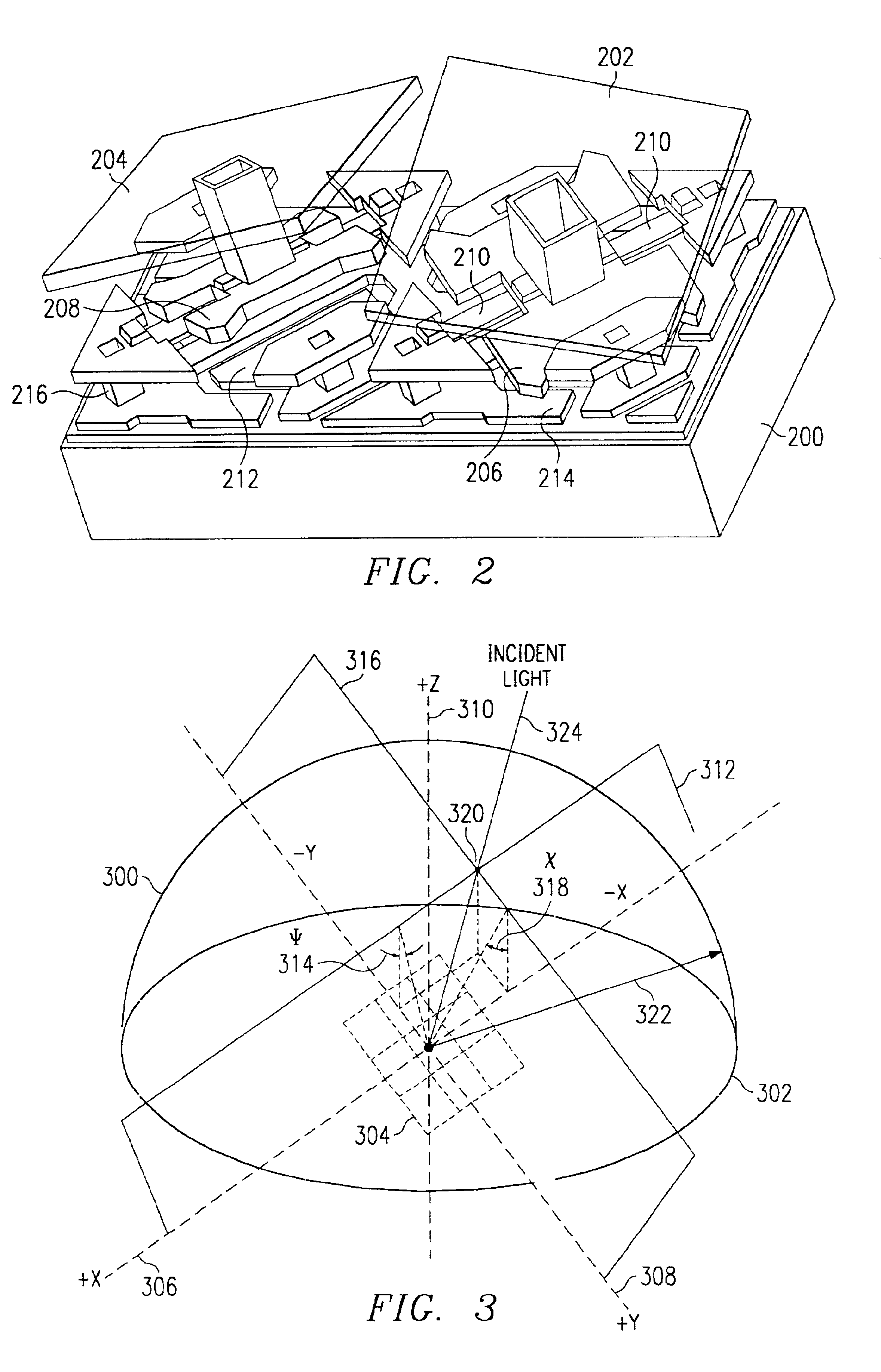Two-dimensional blazed MEMS grating
a two-dimensional blazed, grating technology, applied in the direction of instruments, optical elements, discharge tubes/lamp details, etc., to achieve the effect of efficient switching
- Summary
- Abstract
- Description
- Claims
- Application Information
AI Technical Summary
Benefits of technology
Problems solved by technology
Method used
Image
Examples
Embodiment Construction
[0042]The use of MEMS devices, such as the DMD, in optical switching applications is complicated by diffraction effects. To use a typical DMD device, intended for use in a projection display application, in a near monochromatic spatially coherent switching application, may be extremely inefficient. This is because the near monochromatic spatially coherent light from a laser or optical amplifier, when reflected from the DMD, will likely be shared among several diffraction orders rather than being concentrated in a blazed condition as a single bright spot of light. For this reason, DMDs have not found a wide use in fiber optic / telecommunication applications. Fiber optic telecommunication networks can deploy single wavelength, coarsely populated multiple wavelength or densely populated multiple wavelength sources. For example, in wavelength division multiplexing (WDM) optical networking systems, the light being switched is made up of a number of single wavelength laser or amplified opt...
PUM
 Login to View More
Login to View More Abstract
Description
Claims
Application Information
 Login to View More
Login to View More - R&D
- Intellectual Property
- Life Sciences
- Materials
- Tech Scout
- Unparalleled Data Quality
- Higher Quality Content
- 60% Fewer Hallucinations
Browse by: Latest US Patents, China's latest patents, Technical Efficacy Thesaurus, Application Domain, Technology Topic, Popular Technical Reports.
© 2025 PatSnap. All rights reserved.Legal|Privacy policy|Modern Slavery Act Transparency Statement|Sitemap|About US| Contact US: help@patsnap.com



